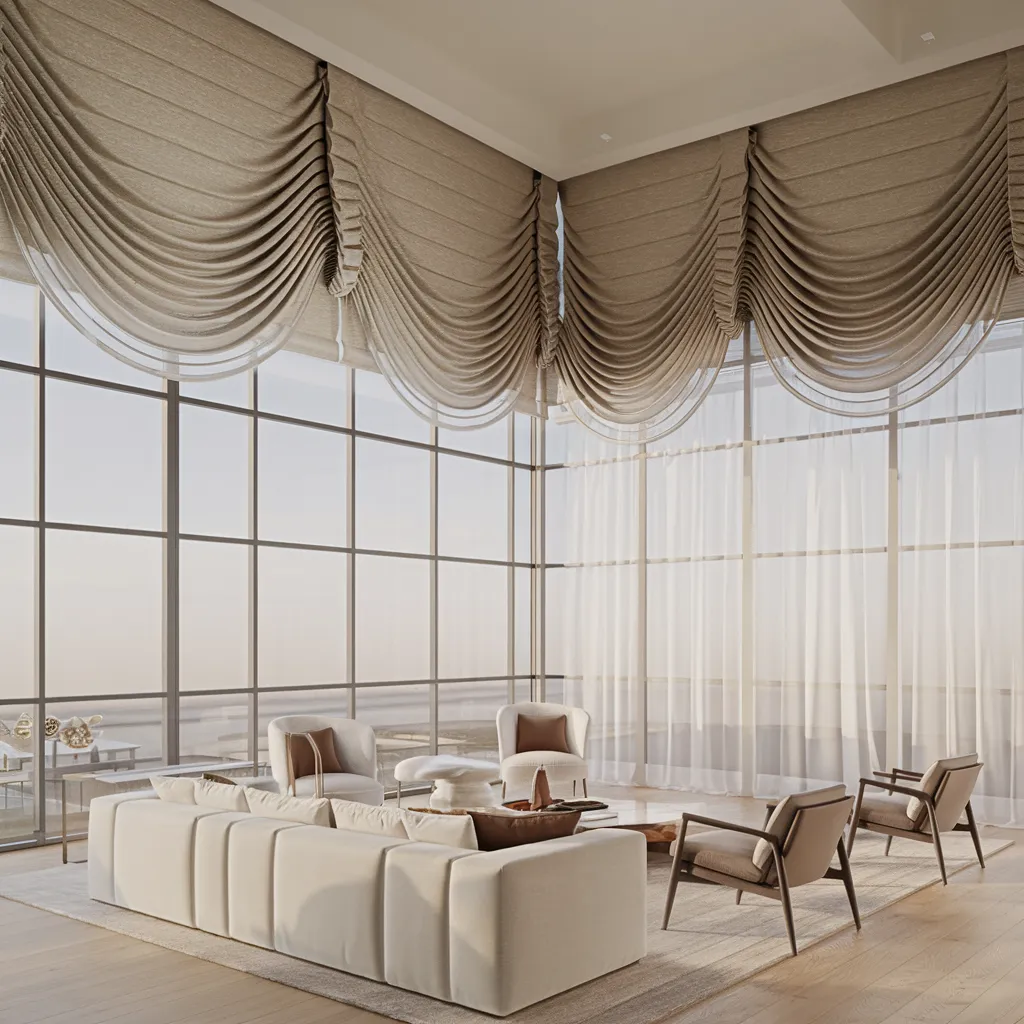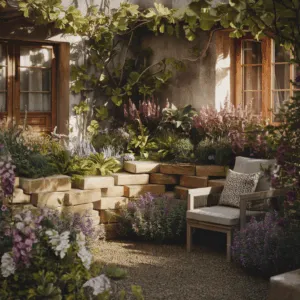Window treatments are a crucial element in interior design, but not all styles are created equal. Some outdated options can make your space feel drab and uninviting. In this article, we’ll unveil the secrets to stunning window treatments that will elevate your home’s aesthetic.
The Bare Truth: Why Naked Windows Are a No-Go
Leaving windows bare and without any treatment is a missed opportunity to create a visually stunning space. Interior designer Alison Downey advises against this outdated approach, recommending layering curtains to add texture, form, and function. A combination of a textured Roman shade paired with an outside-mount ripplefold sheer drape, installed above the window frame, instantly adds height, depth, and visual richness. This layered drapery creates subtle drama, transforming a room from dull to captivating.
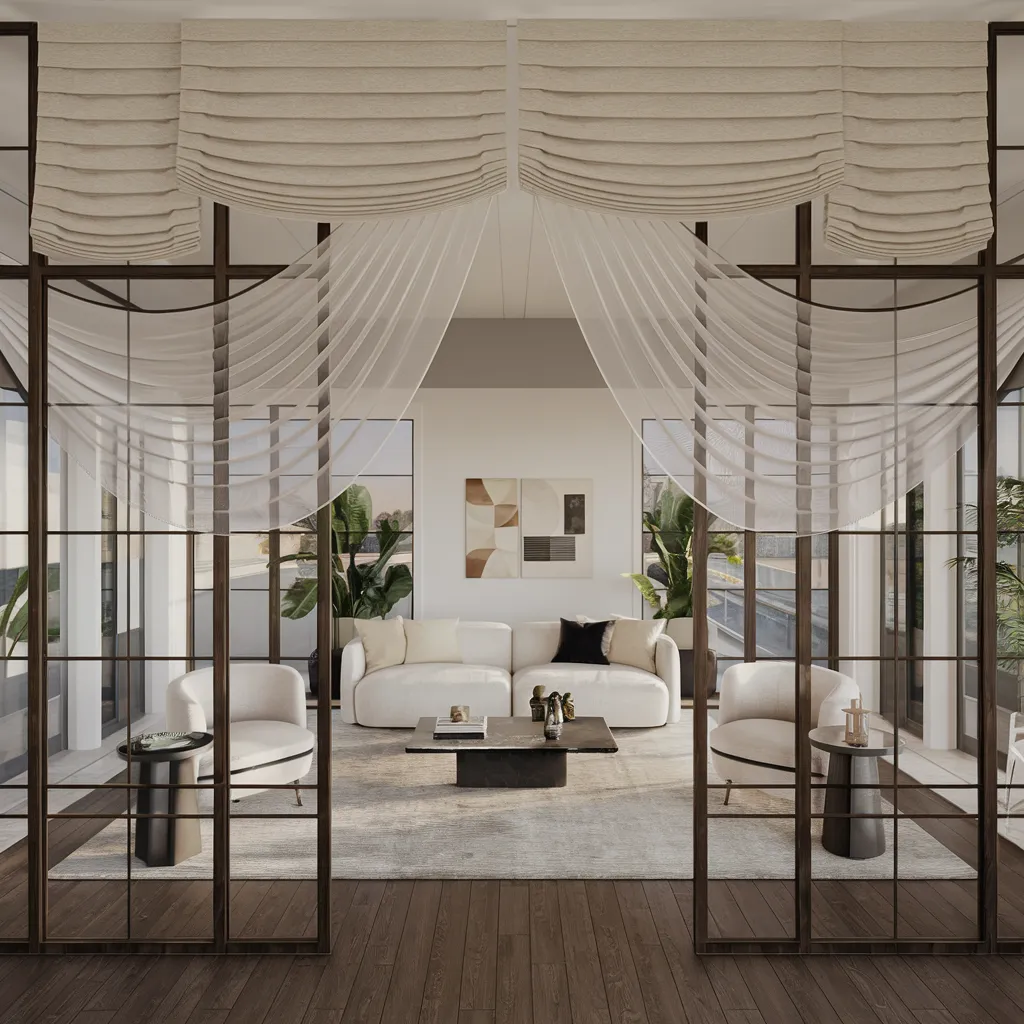
This airy space layers sheer drapery with structured Romans—an elegant fix when glare shifts through the day. The Romans temper heat and UV; the sheers soften views and add movement, all staged against a steel-and-glass partition that zones the room without weight. Style: contemporary minimal with boutique-hotel polish. Palette: ivory and bone textiles, soft gray rug, espresso plank floors, blackened metal, pale stone and fresh leafy greens for contrast.
Roller Shades: Sleek but Soulless?
While roller shades may seem like a sleek and modern choice, interior designer Coco Greenblum warns against using them in residential projects. These shades often feel commercial and cold in a home setting, lacking the warmth and texture that creates an inviting atmosphere. Instead, Greenblum recommends relaxed Roman shades, which strike a perfect balance between traditional and contemporary styles. These shades add a layer of softness that complements a variety of interior designs, elevating the space without sacrificing functionality.
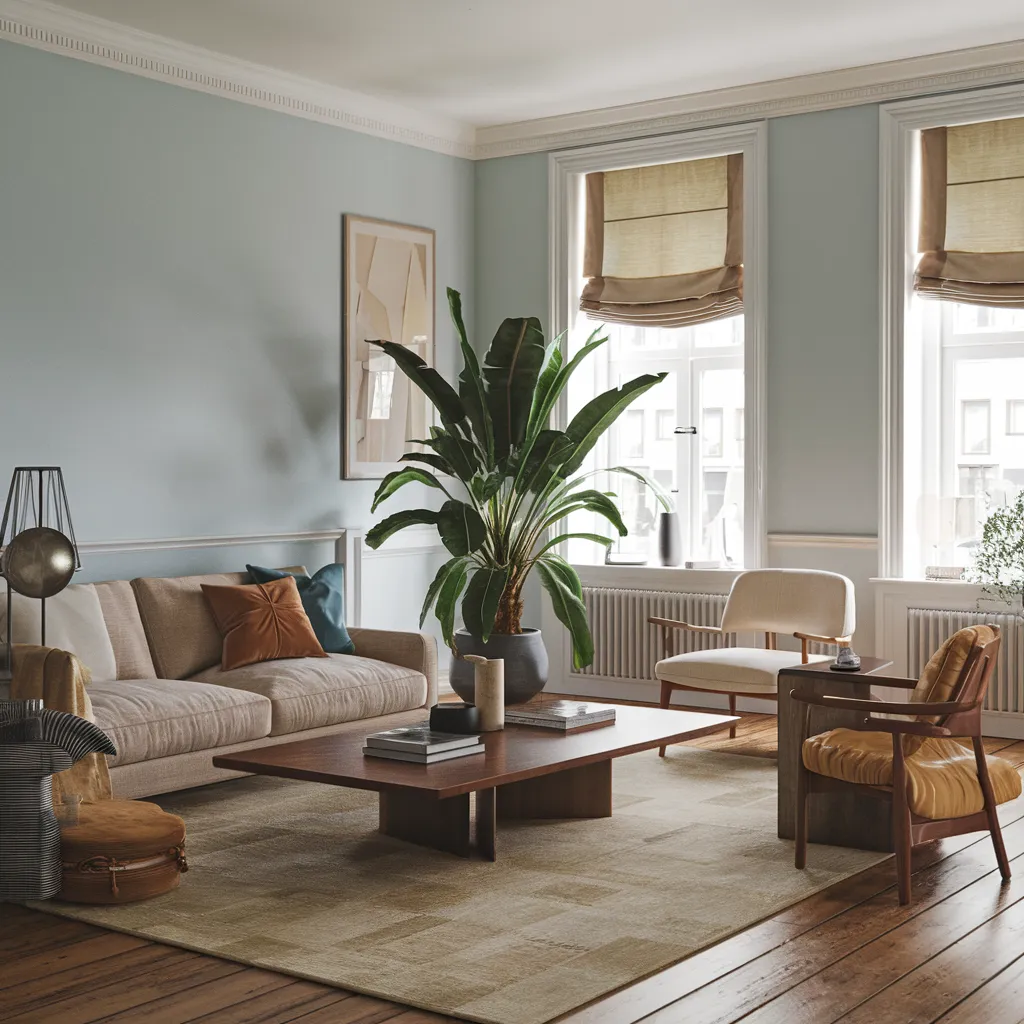
A relaxed living room pairs inside-mount linen Romans with mid-century silhouettes, showing how to add privacy without hiding handsome millwork. Mounting the shades within the frame preserves the casing, while matching all stack heights avoids the “stair-step” mistake. Style: Scandinavian-meets-Mid-Century—gentle lines, grounded by wood and woven textures. Palette: misty blue-green walls, ecru shades, walnut and cognac woods, ivory upholstery, matte black accents and deep plant green.
Eyelet Curtains: Distracting or Delightful?
Eyelet or grommet curtains, while popular, are not the best choice for an elevated look, according to interior designer Anna Kroesser. The grommets can be distracting and detract from the overall aesthetic. Instead, Kroesser suggests opting for back tab curtains, which deliver a more custom look without the high price tag of custom-made curtains. Fabric Roman shades are also a functional option that adds texture without overwhelming the space. By avoiding eyelet curtains, you can create a more cohesive and sophisticated ambiance.
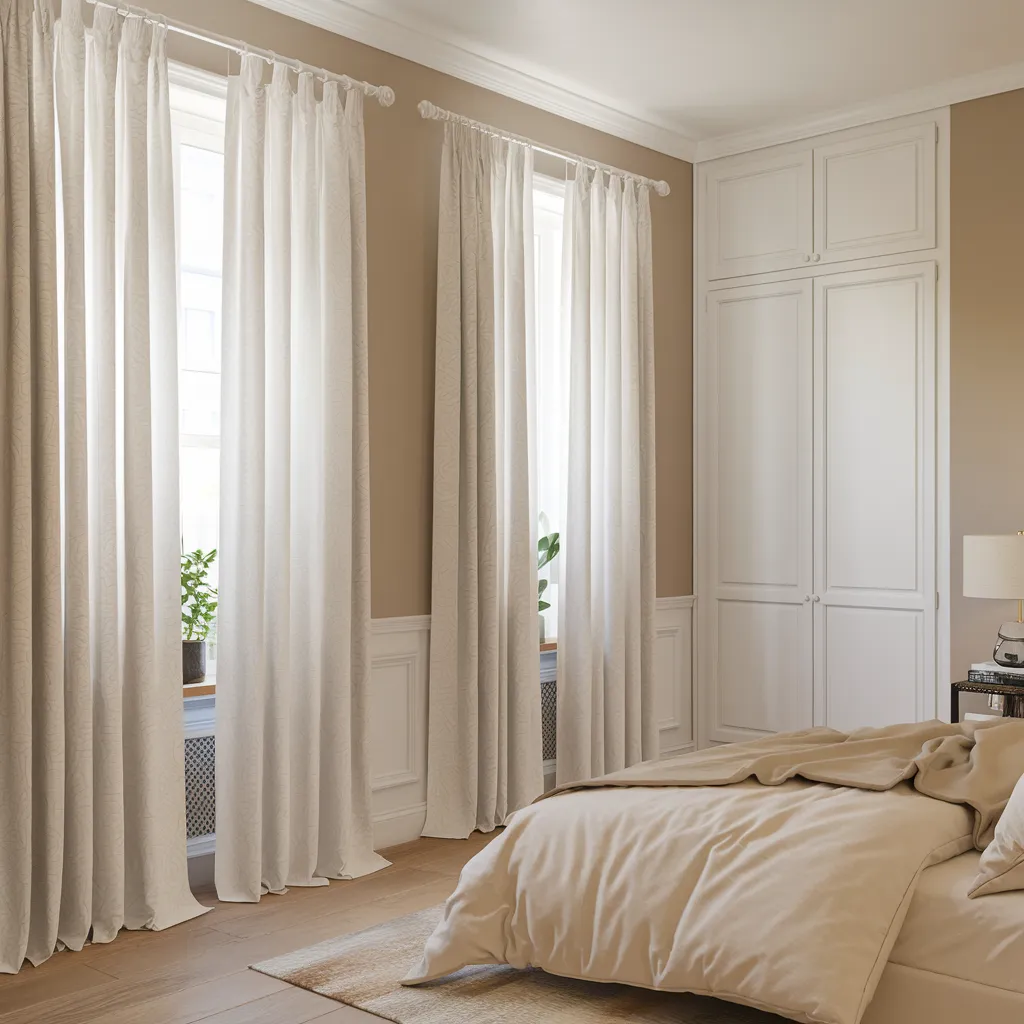
In the bedroom, simple lined panels are mounted near the crown and extend well past each jamb, making narrow windows feel generous while allowing complete closure at night. The headers are uniform and the fabric grazes the floor—no high-water hems or awkward puddles. Style: modern classic—quiet, hotel-calm, yet warm. Palette: soft latte walls, chalky white trim and cabinetry, creamy drapery, pale oak floors and sandy bedding with a whisper of warm brass.
Cornice Conundrum: When Matching Goes Too Far
Interior designer Yena Jung of By Yena Designs finds cornice boards (pelmets) that match the fabric of the curtains to be an outdated and overly contrived choice. This matchy-matchy approach takes away from the beautiful trim around a window and can feel overwhelming. Instead, Jung recommends opting for floor-to-ceiling draping or inset treatments that complement the overall design. Having all window treatments match is also considered dated. For a more modern and cohesive look, she suggests combining Roman shades inset into the window frame with floor-to-ceiling drapery in a complementary style or design.
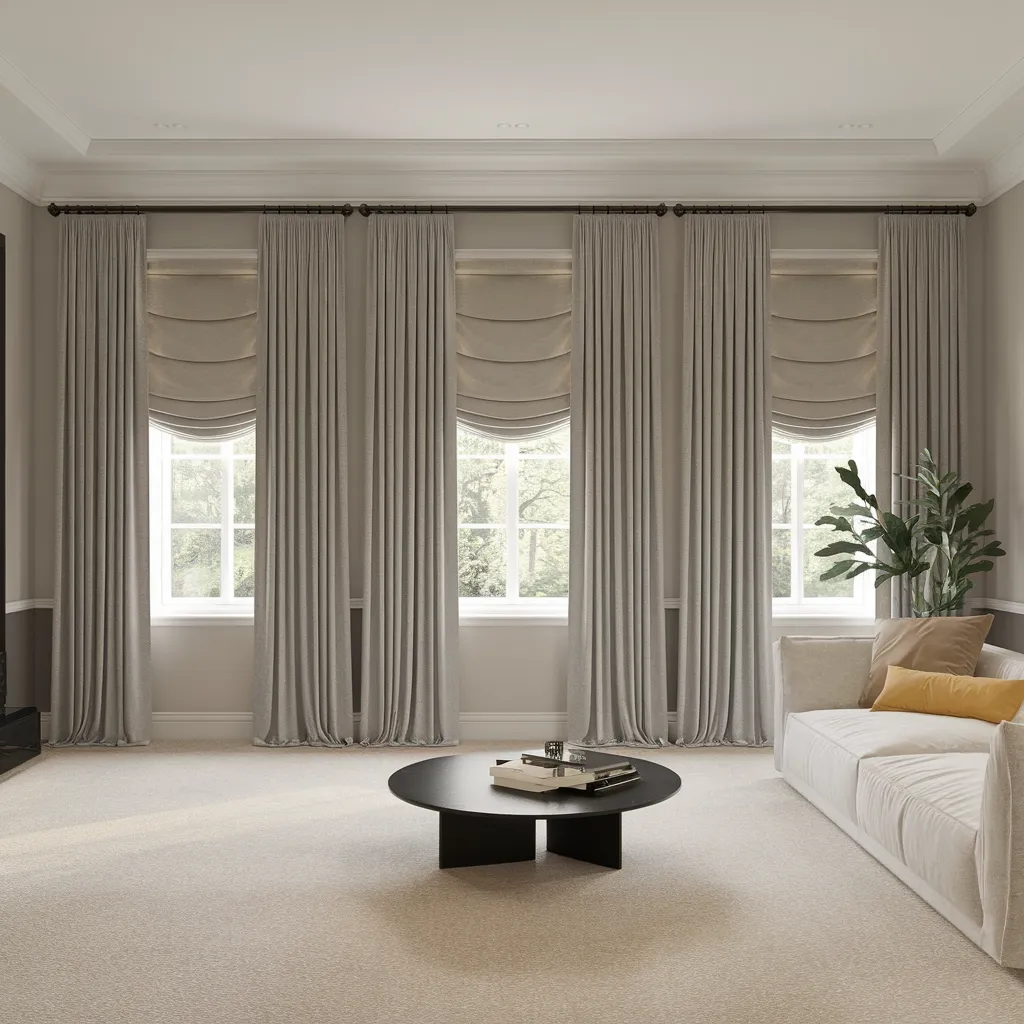
Three tall windows demonstrate the cure for skimpy panels: full-length drapery hung high and wide to elongate the openings, with softly pleated Romans beneath for privacy and precise light control. Note the consistent hem that just kisses the floor and the ample return to block side glow—small details that read custom. Style: transitional—classic proportions with modern restraint. Palette: layered greige and dove, crisp white trim, charcoal hardware, black accents and a muted mustard note.
Unveiling the Secrets to Stunning Window Treatments
By avoiding these outdated window treatment options, you can create a space that exudes sophistication and warmth. The key is to layer textures, combine complementary styles, and prioritize functionality without sacrificing aesthetic appeal. Whether you opt for relaxed Roman shades, back tab curtains, or floor-to-ceiling draping, the right window treatments can transform your home into a sanctuary of style and comfort. Embrace these expert tips, and unveil the secrets to stunning window treatments that will elevate your interior design to new heights.
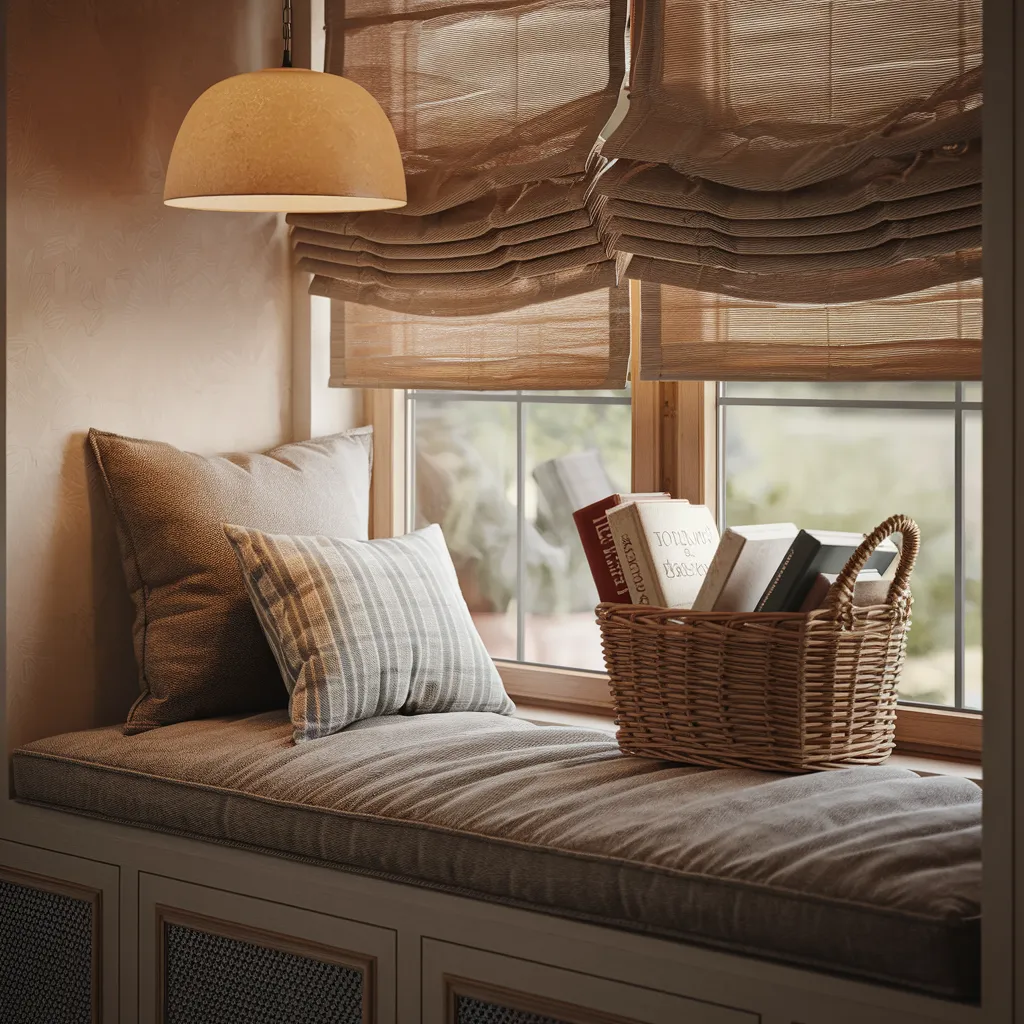
An inviting window seat shows how relaxed Roman shades work when sized and mounted correctly: inside-mount linen folds stack neatly above the glass, filtering light without crowding the frame. A tailored bench cushion, tonal pillows and a wicker basket keep the composition calm—proof that texture can do the heavy lifting. Style: modern cottage with a Scandinavian lean—soft, unfussy, functional. Palette: warm oatmeal, taupe and sand, heather gray and honey wicker, finished by a creamy pendant.

